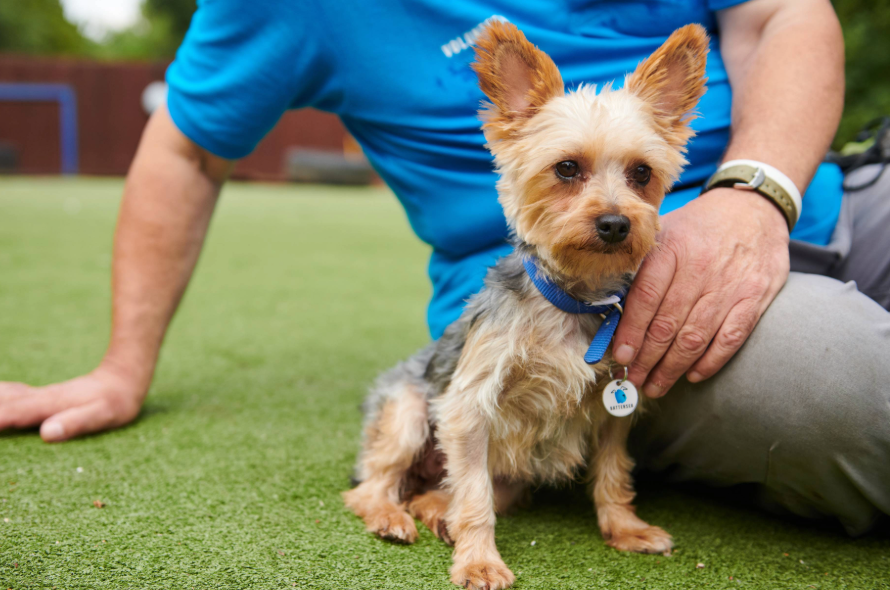What are triggers?
Triggers can be anything that causes your dog stress, worry or fear. Triggers will differ for each dog, and this can include sights, smells, sounds, and even tastes or sensations. Some common triggers may include:
- Loud noises
- Other dogs
- Strangers
- Busy roads
- Children
- Physical contact from strangers
- Unfamiliar places
- Certain environments like a vet
How do triggers affect a dog?
There are lots of ways that dogs can process triggers. Sometimes a dog can process a single trigger easily and move on with their day. Other times, they may find it hard to process the trigger – and this can be for a number of reasons. When your dog is faced with a trigger they can’t process, they may try to move away from it, refuse to go near the trigger, become ‘shut down’ or react in an aggressive or frustrated way.
Certain factors may affect how your dog behaves around their trigger. These include the distance to the trigger, the length of exposure to the trigger and the intensity of the trigger. For example, some dogs may react when they see another dog five metres away, but at further distance, they can cope and stay calm.
Trigger stacking
Trigger stacking can happen when your dog experiences multiple stressful situations – or triggers – one after another without having time to calm down in between. This means each time your dog encounters a trigger, their stress level increases. If they only encounter one or two triggers, they can cope and move on with their day. However, when multiple triggers occur in a short space of time, the stress can be too much for them. This then leads your dog to tip over their threshold of coping, causing them to react.
Try to imagine a scenario that could lead to this. For example, your dog might be fearful of loud noises. While out on a walk, a loud motorbike passes by and causes them to jump. As you continue walking, another dog pulls closer towards them on the pavement. Normally, your dog would ignore the other dog, but this time they bark or growl. Each of these small stressful experiences in close succession has caused your dog to tip over their threshold of coping.
How do I identify my dog’s triggers?
Triggers can be identified by carefully observing your dog in different situations. Start logging any potential triggers you notice and how your dog responded to them. This is a good way to identify areas of concern. Try to make a note of things like the environment, time of day, people present and so on.
It’s important to be aware of your dog’s body language when they’re faced with a trigger. Pay attention to their ears - are they up right or pulled back? Look at their tail – is it wagging fast with tension through the base of the tail? Notice their facial expression - is there tension around the muscles at the side of their mouth or is their brow creased? Body tension, stiffness and a forward posture can also indicate your dog may be about to react. To find out more about how to read your dog’s body language, visit our website or search ‘The Battersea Way’.
How to manage your dog around triggers?
Managing your dog’s environment will help them to cope better when faced with a trigger. You could use pet remedy solutions like a plug-in calming diffuser, pheromone collar or pet approved essential oil. You can use these in your home to help calm your dog’s overall arousal level and make trigger stacking less likely.
Once you have identified your dog’s triggers, you can try to minimise their exposure to them. For example, if you know your dog is triggered by seeing other dogs, consider walking them in less dog-populated areas or during quieter times of the day. You may not always be able to avoid your dog's triggers, so it’s important to consider how to help them cope when faced by them.
If your dog is affected by a trigger, try to remain calm and keep their lead as relaxed as possible. Calmly call or move your dog away with minimal force and reward them with a treat or calm praise.
Teaching them an alternative behaviour can also be a useful management tool. For example, you could teach your dog a ‘this way’ cue to get them to do a U-turn away from the trigger.
You may notice your dog stops listening to you or stops responding to their usual treats. This can be a sign that they aren’t able to cope around the trigger and that a higher value reinforcer such as chicken, might be needed.




